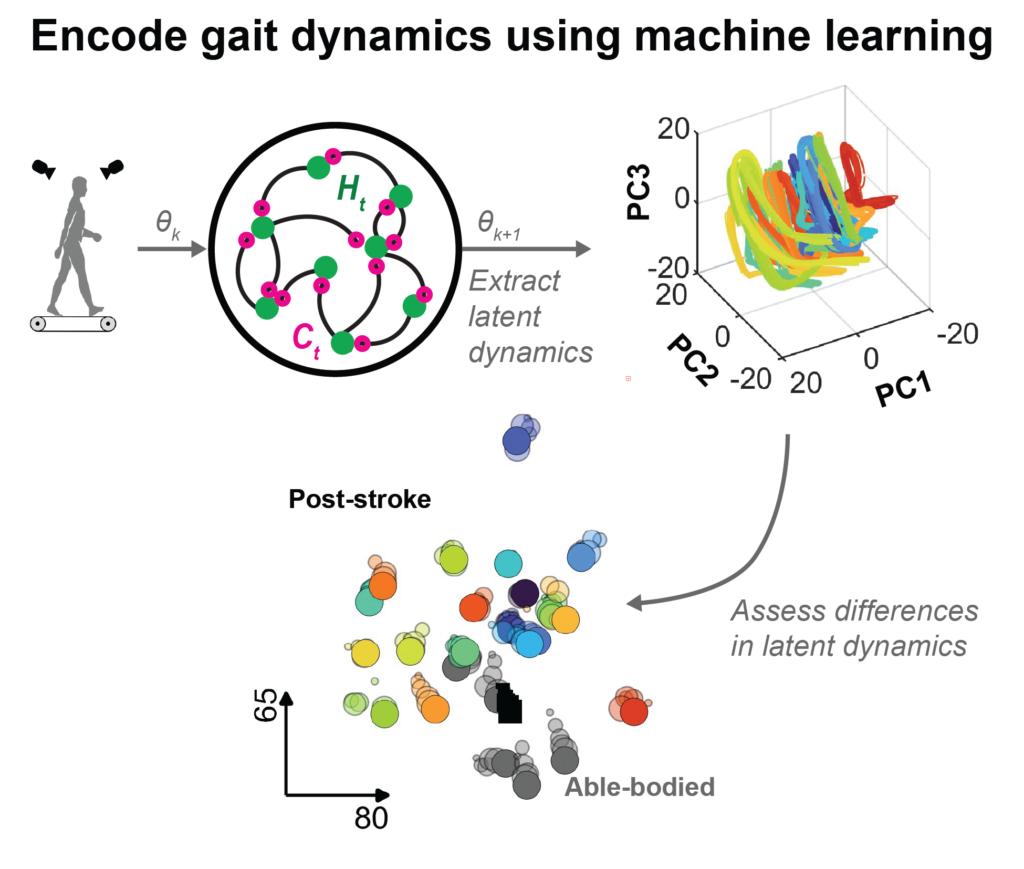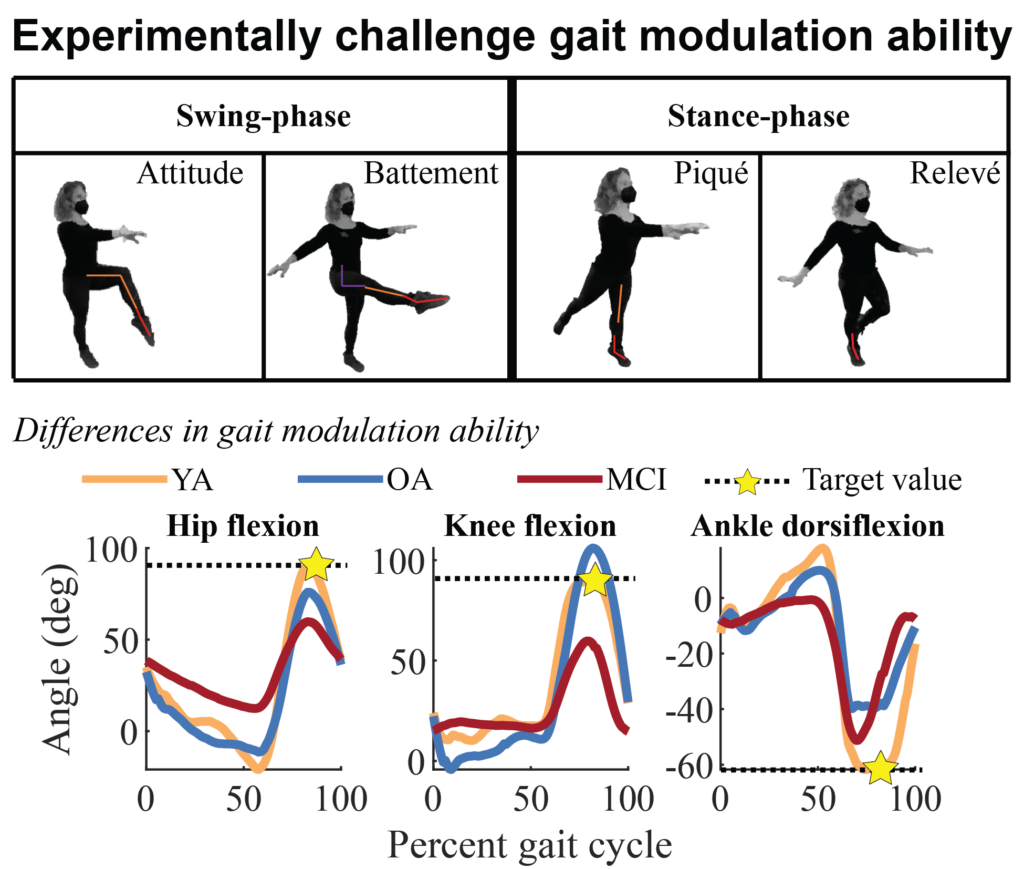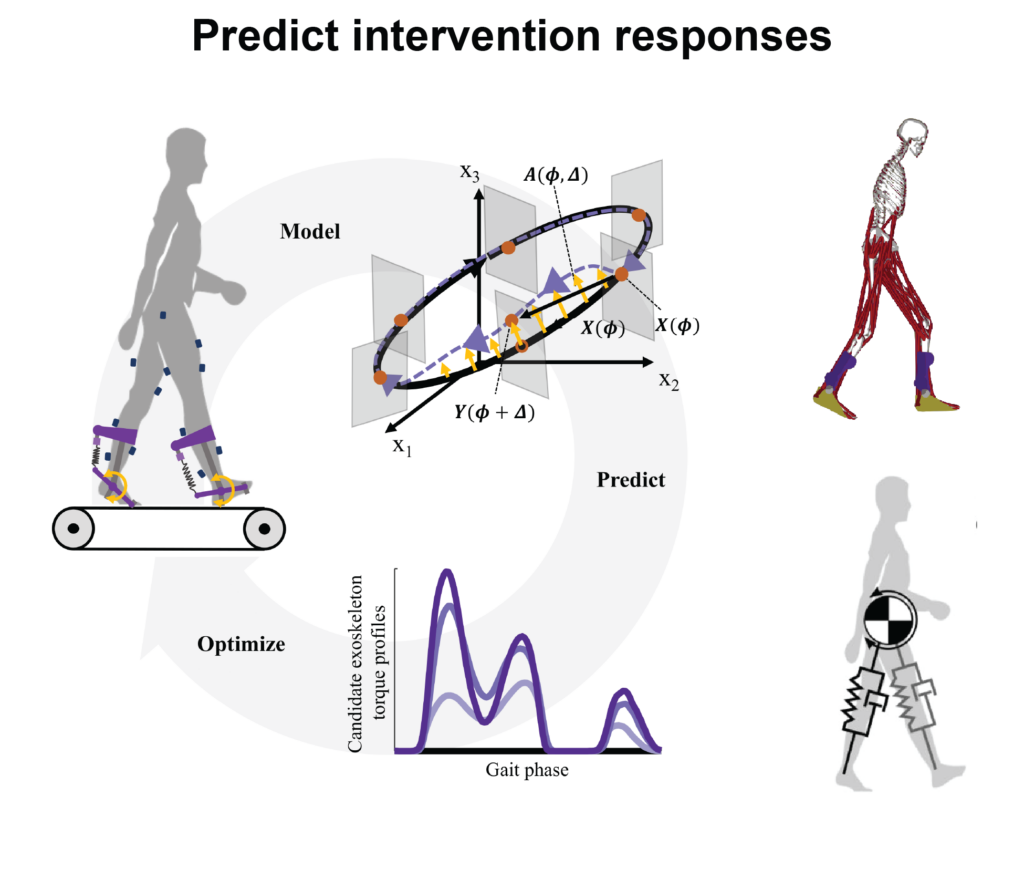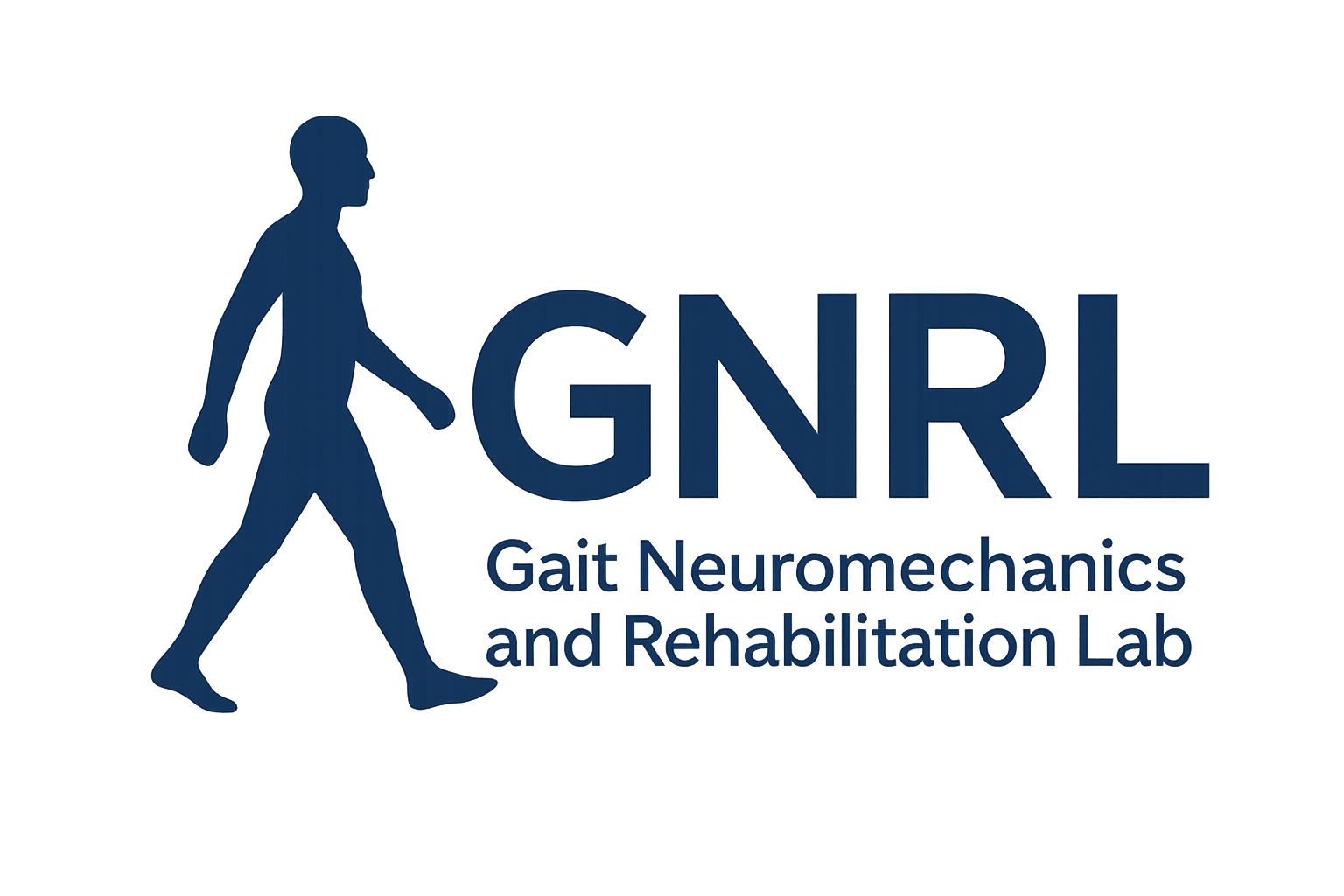
Characterizing individual differences in neuromechanical gait dynamics using machine learning
We use machine learning frameworks to encode individual-specific neuromechanical gait dynamics that can be compared between individuals, treatment types, and over time. We use these frameworks to understand how gait dynamics are related to measures of gait quality and impairment.

Experimental perturbations to reveal underlying impairments
We use a variety of common (e.g., gait speed modulation) and unconventional (e.g., “silly walks”) to uncover individual differences in neuromechanical impairment that are not revealed by people’s preferred gait patterns.

Characterizing and predicting intervention responses
We use machine learning and biophysical models to encode the dynamics governing responses to rehabilitation or assistive interventions. These models advance our understanding of how people respond to interventions and enable predictions of how people may respond to a variety of interventions.
